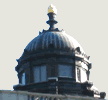

 |
 |
||||||||
|
|
"I'm a great believer in luck, and I find the harder I work the more I have of it." So said Thomas Jefferson. And most people would agree with him. Every September, the nation pays tribute to the men and women whose labor has contributed to the "luck" of the United States, the world's oldest democracy. The first Labor Day was celebrated in New York City on Sept. 5, 1882, when some 10,000 workers assembled to participate in America's first Labor Day parade. After marching from City Hall to Union Square, the workers and their families gathered in Reservoir Park for a picnic, concert and speeches. This first Labor Day celebration was initiated by Peter J. McGuire, a carpenter and labor union leader who a year earlier co-founded the Federation of Organized Trades and Labor Unions, a precursor of the American Federation of Labor. |
|||||
|
|||||
|
McGuire had proposed his idea for a holiday honoring American workers at a labor meeting in early 1882. New York's Central Labor Union quickly approved his proposal and began planning events for the second Tuesday in September. McGuire had suggested a September date in order to provide a break during the long stretch between Independence Day and Thanksgiving. While the first Labor Day was held on a Tuesday, the holiday was soon moved to the first Monday in September, the date we continue to observe. New York's Labor Day celebrations inspired similar events across the country. Oregon became the first state to grant legal status to the holiday, in 1887; other states soon followed. In 1894 Congress passed legislation making Labor Day a national holiday. |
|||||
|
|
|||||
|